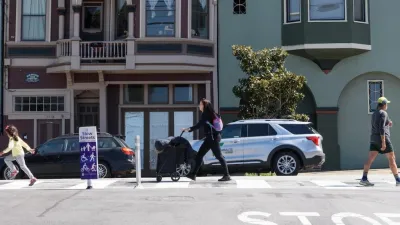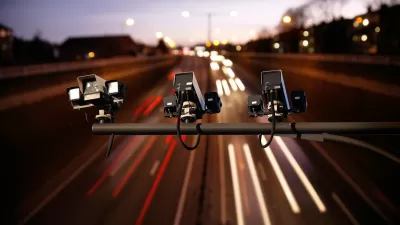As the debate between ‘traditional’ transportation engineering and smarter cities continues, professionals should consider by what measure of success they want to be remembered.
As the debate between ‘traditional' transportation engineering and ‘smarter cities’, for want of a better description, continues, each transportation engineer or planner needs to ask themselves a basic question: what is my broad objective as a professional? What is my measure of success when I am reviewing my career in years to come? Or, what would I want people to say I achieved in life in my 'professional obituary’? Ok, that’s more than one question, and maybe a little morbid (although it makes for a powerful exercise as we’ll explore later), but hopefully you understand the point. What should we, as professionals, be known for?
Should it be that we moved the most people, mainly in private automobiles, in the shortest amount of time? Or should it be that we made a meaningful contribution to the renaissance of cities and towns across the country by working with other disciplines to create healthy, sustainable, resilient and safe communities?
Those that say you can emphasize both at the same time are either delusional or more intelligent than I am. This is not the place for a detailed debate about what smarter cities means, but I would say I mean it to encompass the goals of new urbanism, complete streets, 'healthy cities’ and other movements and organizations that strive to build walkable, bikable, transit friendly cities and towns where it is acknowledged that widening streets to accommodate more vehicles in urban areas will usually do much more harm than good in terms of building complete communities and neighbourhoods.
So in terms of answering the question as to what we should be remembered for, a good place to start would seem to be our professional associations. If you look at the professional code of ethics for engineering and planning in British Columbia some strong themes emerge. APEGBC talks about promotion of health and the environment while PIBC talks about the public interest and promoting sustainable planning. They both emphasize the importance of advancing the body of knowledge in their area of practice. Although some may suggest that these principles could be interpreted either way I would argue that they are actually fairly strong in their promotion of smarter cities. APEGBC’s is actually stronger than I thought it would be in terms of promotion of health objectives and protection of the environment.
Beyond the Codes of Ethics, professionals may rationalize with their heads what is the more appropriate professional objective. Certainly moving more cars more efficiently is easier to measure and can even have a degree of short term satisfaction when you see an intersection operating more 'efficiently’ after you’ve widened it. Working with other disciplines to advance 'quality of life’ or other less defined benefits can seem frustrating and can lack immediate measurable evidence of success. However, choosing to advance 'traditional engineering’ because it has better defined measures of success would be an exceedingly poor way to choose a career objective.
My hope is that more and more transportation professionals, be they engineers or planners, understand with their heads that advancing smart cities or new urbanism is the intelligent thing to do. The evidence is coming in thick and fast, be it from sustainability, health or infrastructure professionals. Dense, mixed use communities are healthier, more environmentally sustainable and more efficient for municipalities to maintain.
But sometimes facts are not enough. If someone is set in their ways you will hardly ever convince them to change their mind with facts. Try it. It rarely works. That is where the title of this essay comes in. What would you want people to say about you, professionally, at your funeral? It’s a weird, morbid idea, but try it for a minute. Imagine people standing up in a church or other building and saying that you were passionate in always trying to move more cars quicker and quicker and that even when the roads filled up again you retained the belief that if only you could build a little more capacity or relieve that bottle-neck, then traffic would flow better. Maybe someone would stand up and thank you for designing a wider road that shaved two minutes off their commute for a couple of years before the road filled up again. Moving isn’t it?!
Or what about if people stood up to thank you for helping to narrow a street and provide better pedestrian and bike facilities that enabled them to get out and explore their community more while also making them healthier. And what if someone else stood up and thanked you for helping to design a new transit oriented development that allowed them to save money on travel costs and got them walking to parks and the grocery store. What if a senior thanked you for making it easier to catch a bus to the community centre, or a child thanked you for enabling them to walk to school rather than being driven, and now they’re healthier and learning better in class. What if people were lining up out of the doors to thank you for things like that.
That’s moving. That’s meaningful. That's quality of life.
FULL STORY: How would you want your ‘professional obituary’ to read?

Alabama: Trump Terminates Settlements for Black Communities Harmed By Raw Sewage
Trump deemed the landmark civil rights agreement “illegal DEI and environmental justice policy.”

Study: Maui’s Plan to Convert Vacation Rentals to Long-Term Housing Could Cause Nearly $1 Billion Economic Loss
The plan would reduce visitor accommodation by 25% resulting in 1,900 jobs lost.

Planetizen Federal Action Tracker
A weekly monitor of how Trump’s orders and actions are impacting planners and planning in America.

Wind Energy on the Rise Despite Federal Policy Reversal
The Trump administration is revoking federal support for renewable energy, but demand for new projects continues unabated.

Passengers Flock to Caltrain After Electrification
The new electric trains are running faster and more reliably, leading to strong ridership growth on the Bay Area rail system.

Texas Churches Rally Behind ‘Yes in God’s Back Yard’ Legislation
Religious leaders want the state to reduce zoning regulations to streamline leasing church-owned land to housing developers.
Urban Design for Planners 1: Software Tools
This six-course series explores essential urban design concepts using open source software and equips planners with the tools they need to participate fully in the urban design process.
Planning for Universal Design
Learn the tools for implementing Universal Design in planning regulations.
Caltrans
Smith Gee Studio
Institute for Housing and Urban Development Studies (IHS)
City of Grandview
Harvard GSD Executive Education
Toledo-Lucas County Plan Commissions
Salt Lake City
NYU Wagner Graduate School of Public Service





























